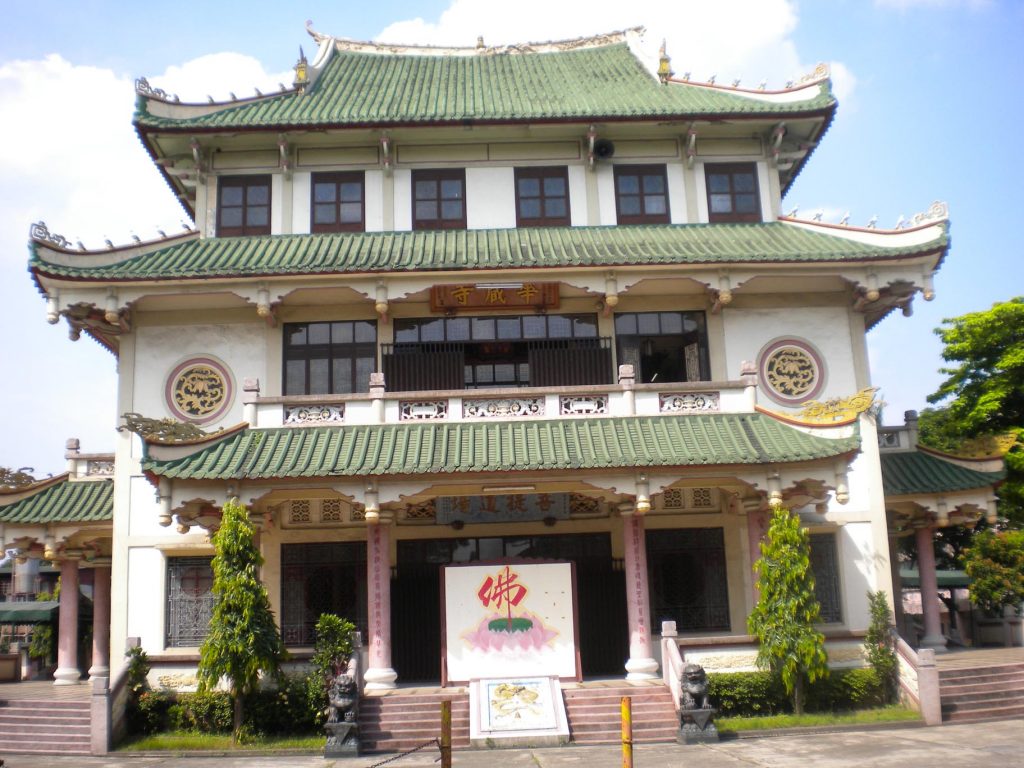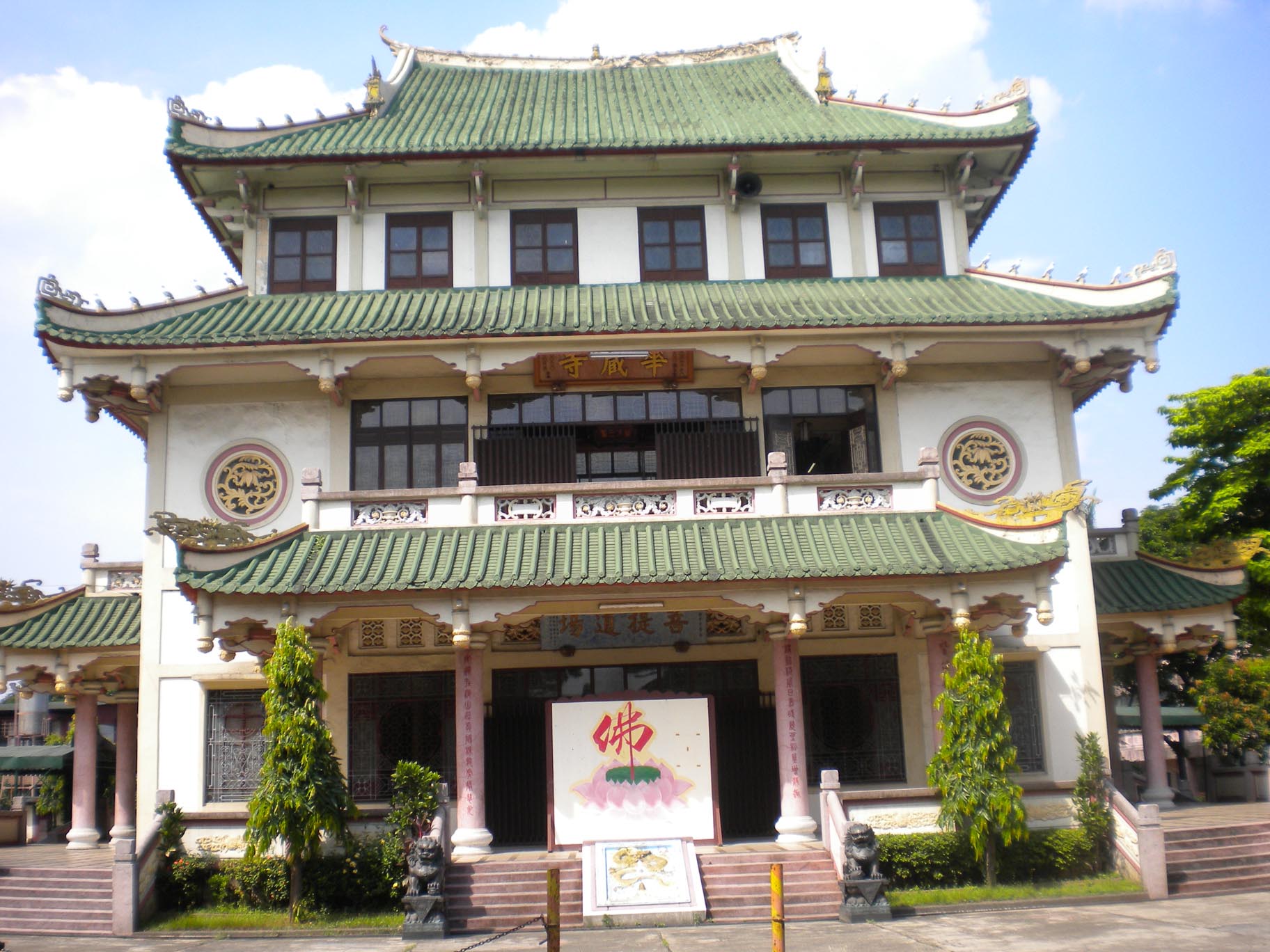Editors Note: This is the sixth of a series about the 36 (not 26 as earlier published) Chinese Buddhist temples of the Philippines. Much of the information is from a thesis of Venerable Chuanmiao (Hsuan Chuang University, 2008), a Buddhist monk affiliated with the Thousand Buddha Temple in Quezon City.
6. Hwa Chong Temple (華藏寺)
Northern Polytech, University Hills Subd., Potrero
Malabon City, Metro Manila | Tels.: 361-0503 • 362-4150
This temple was founded by the acknow-ledged initiator of Chinese Buddhism in the Philippines, Master Xingyuan (性願).
After building Seng Guan Temple (信願寺) in downtown Manila, he felt another temple with more grounds was needed for Buddhism’s propagation. He bought the Malabon property in 1942, construction began in 1951, and the temple opened in 1953.
A number of buildings were added over the years, making the place the largest Buddhist temple complex in the Philippines.
Aside from the main temple building, there is a large ossuary/columbary, ancestral halls, dining hall, and various multi-purpose rooms.
The adjacent school, Philippine Buddhist Shing Guan Memorial Institute, was established in 1970. In another adjacent property, a home for the aged with 108 individual rooms and a cultural resource center were also built.
While it was Xingyuan who had the vision to start the temple, it was Miaojue (妙抉) who executed the plans and oversaw the construction of many buildings, including a memorial pagoda for Xingyuan when the latter died in 1962.

Main buildings. The temple gives the impression of being a park, although it is accessible only through a residential village. Its entrance leads to a large plaza.
The ossuary is to the far left, and the pagoda Xingyuan is on the right. The main temple building occupies the center of the property, and behind it is a garden with two large ponds.
The school is further back. The ancestral and dining halls, dormitories and other facilities are in buildings on both sides of the main temple. The home for the aged and cultural resource center are across the narrow street.
On Sundays and holidays, elderly Chinese can be found using the temple grounds as a park for exercise, fellowship, and Chinese chess games.
Leadership and primary activities. For many years, there was only one abbot for both Seng Guan and Hwa Chong Temples.
After Xingyuan, the famous reformer monk Yinshun (印順) was abbot of both temples for a brief period from 1958 to 1960. Ruijin (瑞今), who was instrumental in the construction of many temples in the Philippines, was also abbot for many years (1962 to 1974, 1986-1990).
Hongchuan (宏船), famous for his work in Fujian and Singapore, was abbot for 12 years (1974-1986). In 1990, Hwa Chong began to have its own abbot in the person of Zhenyi (真意), a disciple of Miaojue. He and two Dharma brothers are in charge of the temple up to the present.
All Buddhist feast days are marked at this temple, but some chanting services are especially highlighted. The three Guanyin feast days are marked on the 21st of the month rather than the actual feast day (19th), to avoid competing with Seng Guan and other temples.
The Qingming festival to honor the dead in April is observed with a three-day chanting service, and on the seventh month, also a time dedicated to praying for the deceased, there is a service on the 27th day.
On the last Sunday of the 10th month, the thousand names of the Buddha are chanted. There are also services to mark the beginning and end of each lunar year.
In early November, the traditional Filipino time for remembering the dead, the complex is visited by thousands of people who come to honor the dead whose ashes are interred in the ossuary.
The complex houses an impressive array of buildings. The home for the aged and cultural resource center function on a very small scale and many rooms are not actually used. The temple has collaborated with other groups like the Miao De Bodhisattva Society to organize activities using the temple facilities.
Because of its traditional Chinese architecture, the temple grounds have been used for film and television projects, most recently the TV5 teleserye, Ang Babaeng Hampaslupa. — First published in Tulay Fortnightly, Chinese-Filipino Digest 25, no. 18 (February 19-March 4, 2013): 14.
